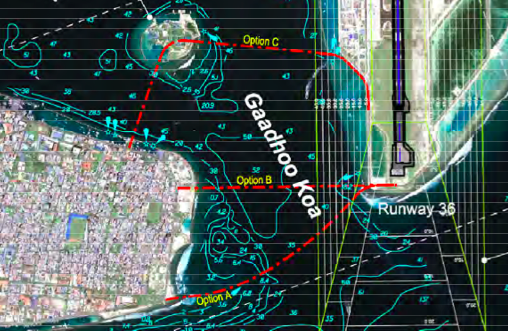A team of Chinese technicians began drilling bore holes on the ocean floor today to gather information for the Malé-Hulhulé bridge project.
Tourism minister Ahmed Adeeb, economic development minister Mohamed Saeed, and other cabinet ministers attended an inauguration ceremony for the bore hole drilling at the raalhugadu (surf point) area of the capital this morning.
Housing and infrastructure minister Dr Mohamed Muiz said at the ceremony that information gathered from drilling the holes will be essential for designing the bridge.
Technicians are drilling 29 bore holes that will be six inches wide and 50 metres deep. Four of the bore holes will be on land.
Surveys and feasibility studies ahead of the design process are being conducted with free aid and technical assistance from the Chinese government.
Muiz said the Maldivian government will seek a developer once the designs are finalised. The project will be financed with a soft loan from the Chinese EXIM bank. The government has previously said the project may cost between US$100million and US$150million.
The six-lane bridge will run from Malé’s surf point to the southwest corner of Hulhulé island’s airport runway, Muiz had previously said.
China has said it would “favourably consider financing” the bridge project if the design proves feasible, while President Xi Jinping said he hoped the government would call the bridge “the China-Maldives friendship bridge”.
The government has said construction of the bridge will be completed by 2017.
Speaking at this morning’s ceremony, Adeeb said the current administration is fulfilling its campaign pledges “like a set of firecrackers on fire.”
Minister @Ahmed_Adeeb inaugurates the ceremony of borehole drilling for building the Male’-Hulhule’ bridge @MMuizzu pic.twitter.com/QgWVBo4A0O
— housing.gov.mv (@HousingGovMv) May 20, 2015
 (0)Dislikes
(0)Dislikes (0)
(0)